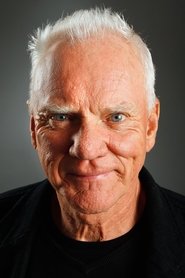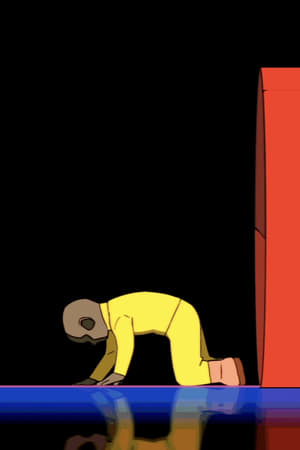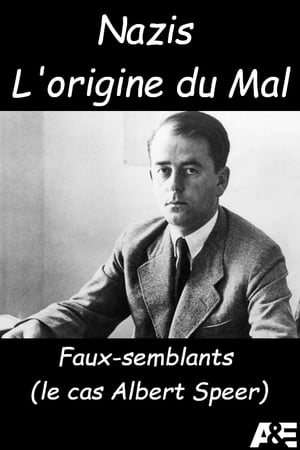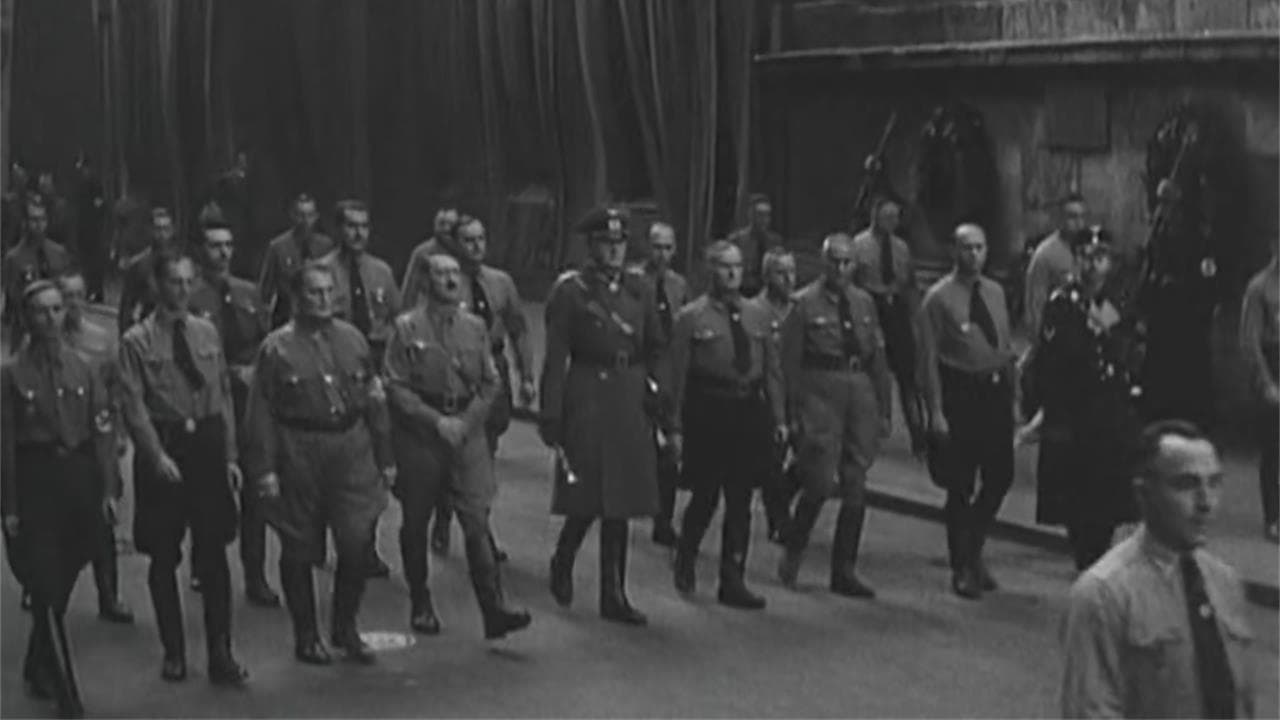
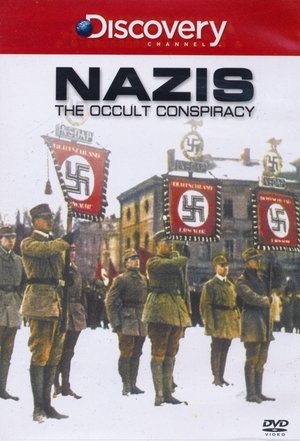
Nazis: The Occult Conspiracy(1998)
This documentary examines how Adolf Hitler and the Nazi regime made use of ancient mysticism, occultism, and mind-control techniques in their efforts to win the war.

Movie: Nazis: The Occult Conspiracy
Top 4 Billed Cast
Self
Self
Self
Recommendations Movies
Americas Deadliest Prison Gang(en)
Jeremy Marre worked under extreme conditions, sometimes even at gunpoint, to make the programme. And as it unfolds, the documentary questions how society deals with men prepared to live and die by their own warrior code. Snatched from their cells in maximum security prisons across America, some 40 members of the infamous Aryan Brotherhood gang were flown to fortress jails in Los Angeles. Twenty three of them faced the death penalty at the biggest case in US criminal history. Marre's determination to infiltrate the Brotherhood and to document its history is commendable. And his persistence bears fruit as he achieves unique access to the gang's leadership, acquiring secret videos of prison killings, beatings, riots and drug running.
The Siege(en)
A team of armed Pakistani militants stage a terrorist attack at the Taj Mahal Palace Hotel in India.
Book Bozo(en)
Jimmy Aubrey plays a book agent and on his rounds of selling is induced to substitute for a local fistic star. His adventures in the prize ring furnish a great deal of comedy.
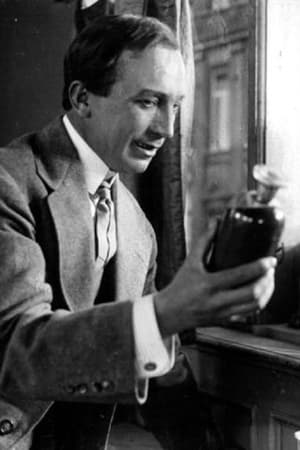 5.0
5.0The Love Potion(da)
The pharmacist Peter Pille and Colonel Sejrsberg's beautiful niece, Inger, are in love. Unfortunately, the Colonel is against the idea of an engagement and generally detests men who court young girls. Peter Pille finds out that the Colonel's negative attitude is due to jealousy and envy, because he himself has never really had luck with the ladies. Maybe a homemade love potion will do the trick? (stumfilm.dk)
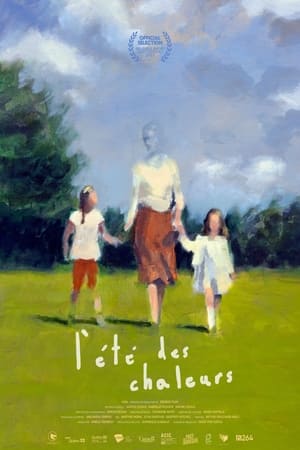 5.0
5.0Heat Spell(fr)
A hot summer day. A half-unpacked house. A mother who needs room to breathe, and a child who needs space to truly exist. As the afternoon heat turns oppressive, time seems to move entirely differently for each person.
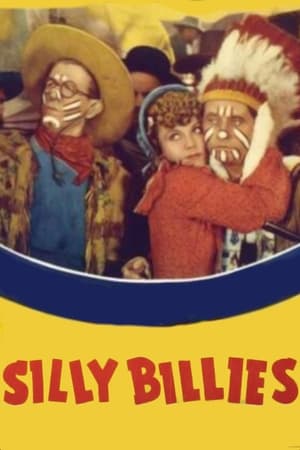 8.0
8.0Silly Billies(en)
The boys are a dentist and his assistant traveling to the Old West to open a new practice. Once in town, they buy a business--only to wake up the next day and see that the entire population of this bustling town had left for the California gold fields early that morning! Then, they discover an evil plot to sell out these settlers to some hostile Indians, so they spring to the rescue.
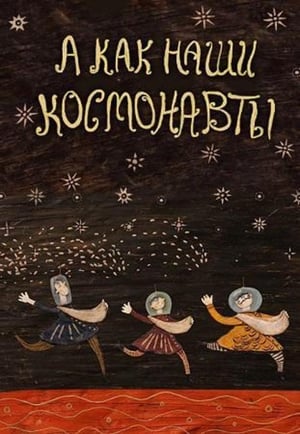 5.9
5.9About Our Astronauts(ru)
Three cosmonauts bid farewell to their loved ones and embark on a journey into space, where they encounter discoveries in uncharted territory yet to be explored by humankind.
Ensamrummet(sv)
Emma's parents are going to divorce, but before that the family goes on holiday to the countryside. Emma is left alone when the parents just arguing and moving to another room. Soon she discovers that there is something mysterious about the room when a typewriter starts writing a message by itself...
 5.0
5.0This Ain't Bebop(en)
This Ain't Bebop is Ralph Bakshi's first live action short, starring Harvey Keitel and featuring Ron Thompson as the beatnik poet and Rick Singer as Jackson Pollock.
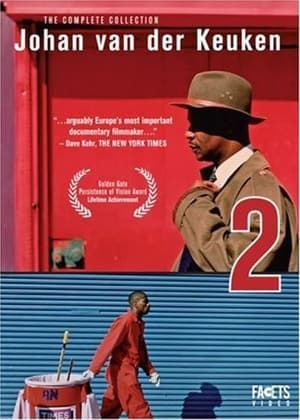 5.3
5.3Amsterdam Afterbeat(en)
Johan van der Keuken: 'We kept the ends of a lot of shots in Amsterdam Global Village: the camera leaves the subject and pans to the sound woman, who quickly taps the microphone. These taps later in the cutting become the references for synchronising picture and sound. This film is the rhythmic sequence of these taps, in which something of a story can be seen.
 5.0
5.0Art in the Public Eye: The Making of Dark Star Park(en)
This piece documents the process behind the creation of Holt's major public art installation, Dark Star Park, in Arlington, Virginia. The park, which features giant concrete spheres and pipes, allows the visitor to reconsider the experience of space, earth and sky within an urban context. It also serves as a kind of contemporary Stonehenge: once a year, on August 1 at 9:30 am, the shadows of the objects exactly align with outlines on the ground. Interviews with the artist, the architects, engineers, contractors, and the public, among others, reveal Dark Star Park as both a public sculpture and a functioning park that reclaims a blighted urban environment.
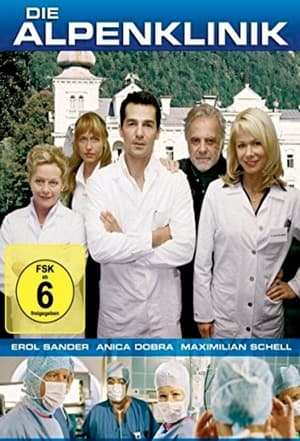 3.0
3.0Die Alpenklinik(de)
After an alleged malpractice that led to the death of his brother, heart surgeon Daniel Guth took the consequences: he gave up his beloved job and retreated into the solitude of nature. At his place of refuge, the Salzburg mountains, the heiress to a private clinic is desperately looking for a capable chief physician. Daniel declines the post, although he finds the woman attractive. When a boy is seriously injured in a bus accident, he is confronted with his trauma again.
 5.0
5.0Miss World 1970: Beauty Queens and Bedlam(en)
The story of the 1970 Miss World contest, when protestors dramatically disrupted the event, kickstarting a feminist revolution in front of an audience of millions.
Similar Movies
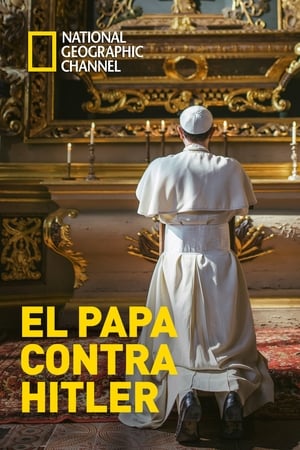 6.0
6.0Pope Vs. Hitler(en)
In the darkest days of World War II, St. Peter's was shrouded in the shadow of the swastika. But even as the Führer surrounded him, the Pope was plotting a secret counter-offensive. Wartime Pontiff Pius XII has been derided for his public silence about the Holocaust. But evidence suggests his silence may have been subterfuge.
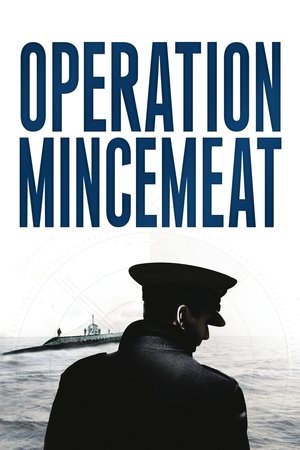 8.0
8.0Operation Mincemeat(en)
Documentary detailing the successful Operation Mincemeat in 1943, which led to the Allies successfully invading Sicily and the war turning in their favour.
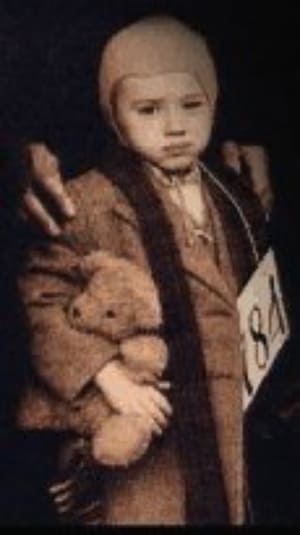 5.0
5.0The Children Who Cheated the Nazis(en)
A documentary about the decisions parents made in evacuating their children out of harm's way (the Nazis), and being forced to stay behind, the parents realize that this may possibly be the last time they will see their loved ones.
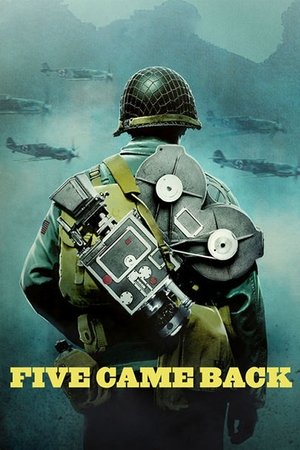 7.9
7.9Five Came Back(en)
The extraordinary story of how Hollywood changed World War II – and how World War II changed Hollywood, through the interwoven experiences of five legendary filmmakers who went to war to serve their country and bring the truth to the American people: John Ford, William Wyler, John Huston, Frank Capra, and George Stevens. Based on Mark Harris’ best-selling book, “Five Came Back: A Story of Hollywood and the Second World War.”
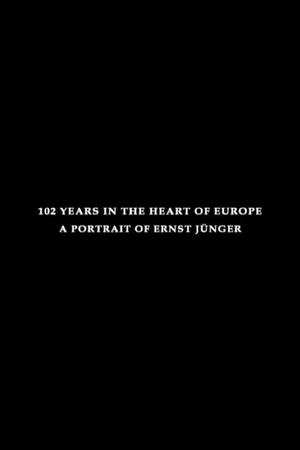 10.0
10.0102 Years in the Heart of Europe: A Portrait of Ernst Jünger(sv)
102 Years in the Heart of Europe: A Portrait of Ernst Jünger (Swedish: 102 år i hjärtat av Europa) is a Swedish documentary film from 1998 directed by Jesper Wachtmeister. It consists of an interview by the journalist Björn Cederberg with the German writer, philosopher and war veteran Ernst Jünger (1895-1998). Jünger talks about his life, his authorship, his interests and ideas. The actor Mikael Persbrandt reads passages from some of Jünger's works, such as Storm of Steel, The Worker, On the Marble Cliffs and The Glass Bees.
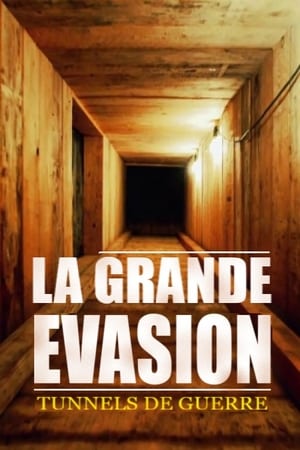 8.5
8.5The Great Escape(fr)
On March 24, 1944, in the heart of Nazi Germany, 76 British, Canadian, Norwegian and French pilots who were held in Stalag Luft III, a prison camp of the Luftwaffe, escaped. Unique testimony from the last survivors, recreations and today’s digital images sheds new light on the audacious escape.
Hitler's Forgotten Victims(en)
The story of black and mixed race people in Nazi Germany who were sterilised, experimented upon, tortured and exterminated in the Nazi concentration camps. It also explores the history of German racism and examines the treatment of Black prisoners-of-war. The film uses interviews with survivors and their families as well as archival material to document the Black German Holocaust experience.
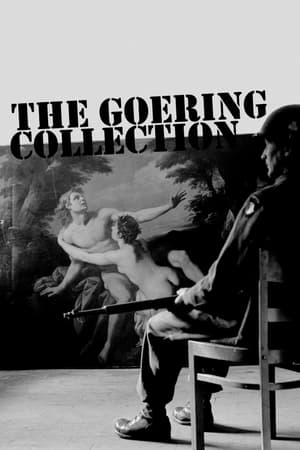 7.3
7.3Goering's Catalogue: A Collection of Art and Blood(fr)
For more than a decade, Reichsmarschall Hermann Goering, Adolf Hitler's right-hand man during the infamous Third Reich, assembled a collection of thousands of works of art that were meticulously catalogued.
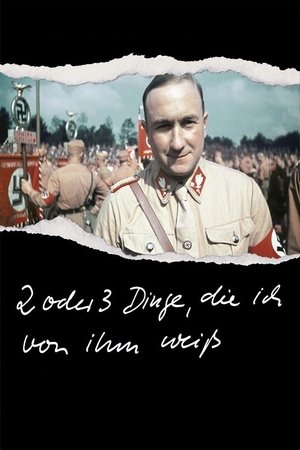 6.6
6.62 or 3 Things I Know About Him(de)
What would your family reminiscences about dad sound like if he had been an early supporter of Hitler’s, a leader of the notorious SA and the Third Reich’s minister in charge of Slovakia, including its Final Solution? Executed as a war criminal in 1947, Hanns Ludin left behind a grieving widow and six young children, the youngest of whom became a filmmaker. It's a fascinating, maddening, sometimes even humorous look at what the director calls "a typical German story." (Film Forum)
 8.2
8.2Night and Fog(fr)
Filmmaker Alain Resnais documents the atrocities behind the walls of Hitler's concentration camps.
 6.9
6.9Olympia: Part One – Festival of the Nations(de)
Commissioned to make a propaganda film about the 1936 Olympic Games in Germany, director Leni Riefenstahl created a celebration of the human form. This first half of her two-part film opens with a renowned introduction that compares modern Olympians to classical Greek heroes, then goes on to provide thrilling in-the-moment coverage of some of the games' most celebrated moments, including African-American athlete Jesse Owens winning a then-unprecedented four gold medals.
 6.7
6.7Olympia: Part Two – Festival of Beauty(de)
Commissioned to make a propaganda film about the 1936 Olympic Games in Germany, director Leni Riefenstahl created a celebration of the human form. Where the two-part epic's first half, Festival of the Nations, focused on the international aspects of the 1936 Olympic Games held in Berlin, part two, The Festival of Beauty, concentrates on individual athletes such as equestrians, gymnasts, and swimmers, climaxing with American Glenn Morris' performance in the decathalon and the games' majestic closing ceremonies.
 6.1
6.1The Case of Bruno Lüdke(de)
The incredible story of Bruno Lüdke (1908-44), the alleged worst mass murderer in German criminal history; or actually, a story of forged files and fake news that takes place during the darkest years of the Third Reich, when the principles of criminal justice, subjected to the yoke of a totalitarian system that is beginning to collapse, mean absolutely nothing.
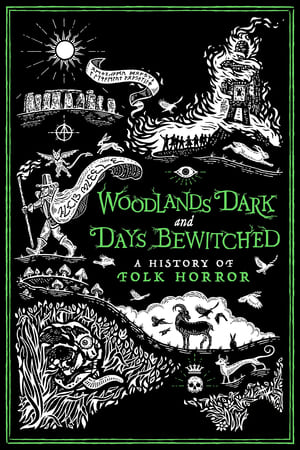 7.4
7.4Woodlands Dark and Days Bewitched: A History of Folk Horror(en)
An exploration of the cinematic history of the folk horror, from its beginnings in the UK in the late sixties; through its proliferation on British television in the seventies and its many manifestations, culturally specific, in other countries; to its resurgence in the last decade.
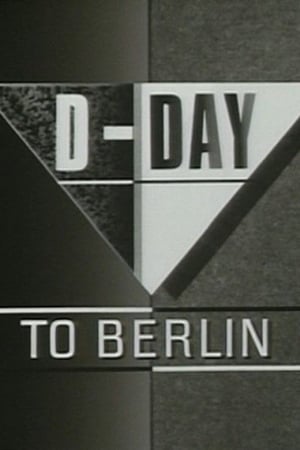 7.5
7.5D-Day to Berlin: A Newsnight Special(en)
George Stevens's remarkable film is acclaimed by historians as the most important colour footage taken during the war. Milestones covered include the liberation of Paris, the link-up between the Russian and American armies on the River Elbe and the Allied capture of the Dachau concentration camp.
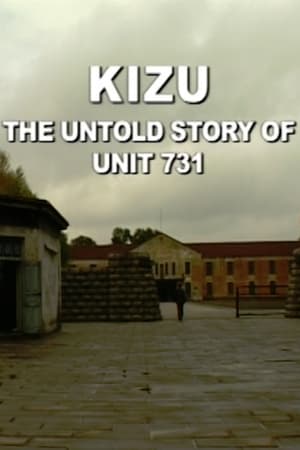 6.7
6.7Kizu: The Untold Story of Unit 731(fr)
Documentary about Japan's Unit 731 of World War II.
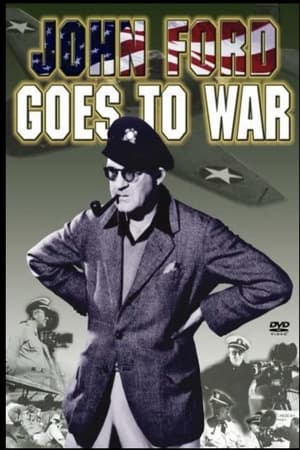 5.7
5.7John Ford Goes to War(en)
When World War II broke out, John Ford, in his forties, commissioned in the Naval Reserve, was put in charge of the Field Photographic Unit by Bill Donavan, director of the soon-to-be-OSS. During the war, Field Photo made at least 87 documentaries, many with Ford's signature attention to heroism and loss, and many from the point of view of the fighting soldier and sailor. Talking heads discuss Ford's life and personality, the ways that the war gave him fulfillment, and the ways that his war films embodied the same values and conflicts that his Hollywood films did. Among the films profiled are "Battle of Midway," "Torpedo Squadron," "Sexual Hygiene," and "December 7."
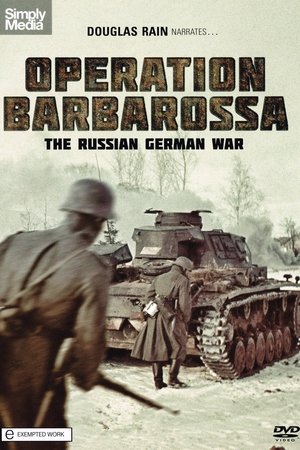 5.5
5.5The Russian German War(en)
This is a rare look at one of the worst horror stories in the long infamous history of warfare. This series features captured German and Russian film footage, much of which has never been seen before. For decades the Cold War prevented us from looking closely at what really happened between the Russians and the Germans on the Eastern Front during World War II. More than a struggle between nations, it pitted maniacal tyrant against maniacal tyrant, evil ideology against evil ideology. The lives of tens of millions of human beings were consumed by its raging hatreds and appalling indignities. One in every ten Russians died. One in every four Poles died. Whole divisions of Italians, Romanians, Hungarians disappeared with barely a trace. An average of 17,800 people died on every single day and this, the war on the Russian German Front, lasted for 1,400 days. This series features captured German and Russian film footage, much of which has never been seen before.
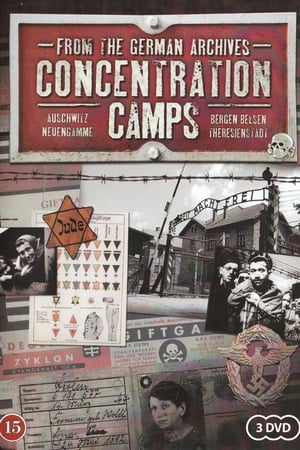 7.0
7.0The Liberation of Auschwitz(de)
This chilling, vitally important documentary was produced to mark the 40th anniversary of the liberation of Auschwitz Concentration Camp. The film contains unedited, previously unavailable film footage of Auschwitz shot by the Soviet military forces between January 27 and February 28, 1945 and includes an interview with Alexander Voronsov, the cameraman who shot the footage. The horrifying images include: survivors; camp visit by Soviet investigation commission; criminal experiments; forced laborers; evacuation of ill and weak prisoners with the aid of Russian and Polish volunteers; aerial photos of the IG Farben Works in Monowitz; and pictures of local people cleaning up the camp under Soviet supervision. - Written by National Center for Jewish Film
